So you’ve chosen and adopted your new pooch and have survived the first 24 hours with your new dog.
You made it through the night – and hopefully you still have your sanity intact.
As you’re on your way to work, you wonder: what training is most important to work on with my dog over the next weeks and months? Where do we begin?
The next months will continue to be an adjustment period for your pooch.
Some dogs will settle into their new routine fairly quickly. Other dogs will get more difficult before they get easier.
It’s an unfortunate reality that many dogs will actually be naughtier once they’re more comfortable. Expect the unexpected at first with your new dog!
Consider this a guide of your adjustment period: what to do, what not to do, and what to watch out for!
The First Few Months Will Be An Adjustment
While the first weeks and months with your new dog will continue to be an adjustment, full of unexpected problems and hiccups, it’s also an incredibly exciting time.
You and your dog will begin getting to really know each other, and your long-term bond of trust will begin to form.
The feeling of joy I felt the first time Barley fell asleep in my lap is something I won’t soon forget.
You’ll start exploring your new life together, be it via hiking, attending coffee shop tours, going to work together, or just enjoying quiet walks in the park.
Settling into your new routine together is a huge relief after the turmoil of early dog ownership, but this transition will take time.
Some dogs adjust quickly, others may take a year or more to really relax into home life.
Barley, my new rescue, was friendly with everyone when we first brought him home. However, he was frantic about fetch.
While the fetching obsession eased up as he got comfortable with us, he began exhibiting stranger-danger growling!
It turns out that Barley was so nervous at first that he didn’t show his normal behaviors with us. His “normal” included growling at people in hoodies, wearing sunglasses, in hats, or who were otherwise “weird-looking.” We started working on that training right away!
Your first week with your new dog will be an extension of the first 24 hours.
You and your dog are still getting to know each other. The good news is, the real fun can finally start – although you’ll still want to take it slow if you have a fearful dog or a dog with other behavioral concerns.
If you’ve got a puppy this period is very important – you need to get your puppy socialized, and fast!
Remember & Enforce Your Ground Rules
Don’t make week one a free for all. There still should be some fairly strict ground rules as you and your doggo settle in together.
We said this in part 2 of our dog adoption guide, and we’ll touch on it again here:
If your dog won’t normally be allowed to sleep on the bed, don’t let her sleep on the bed in the first week – no matter how cute and cuddle she is!
It’s easier to stop a habit before it starts than it is to change one. Stand firm!
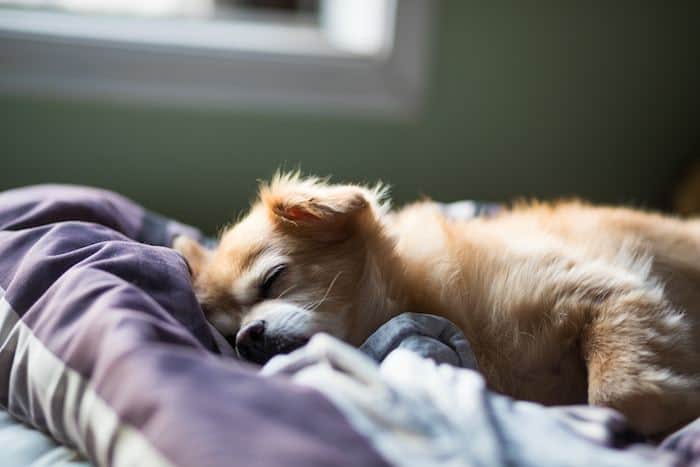
Supervise and Contain Your Canine
With my foster dogs, there is no presumption of innocence.
My new dogs are guilty until proven innocent, so I don’t trust them with just about anything for the first week. If your eyes aren’t on your dog, keep them away from all items and areas that can’t be dog-proofed.
This rule applies when you’re:
- Working on the computer
- Cooking dinner
- Taking a shower
- Away from the home
During these times, keep your doors closed to the bathroom and bedrooms!
Your next step will be to utilize indoor dog gates or x-pen to keep your new dog inside of the kitchen.
The kitchen cabinets should have child locks, the trash should have a lid (opt for a dog-proof trash can if your dog is especially nosey).
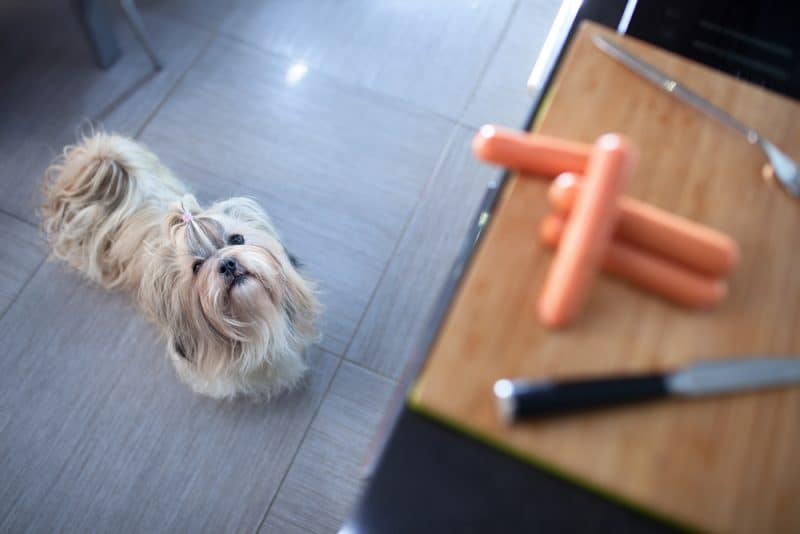
If you have a cat, move the cat’s litterbox to a separate area and consider investing in a dog-proof litter box.
Once everything is on lockdown mode, there’s really not that much for your new pup to eat or get into, and the tiled kitchen floor makes messes easy to clean – and that’s how it should be!
You don’t want your new dog to fail and get into bad habits. It’s easier to start with management and then transition to training.
When you have time to supervise your dog, start letting her explore the house. That way you’ll be there if she gets into trouble. You then can swoop in to show her what to do instead of chewing on those electric cords!
Don’t be afraid to get creative when it comes to containment methods, and remember that short-term confinement while your pooch learns the ropes is safest for her.
I started out keeping Barley in a crate whenever I wasn’t watching. I then started leaving him out in the kitchen for short times. Then – up to a full work day. Next, he got access to the whole house for a few unsupervised hours, and so on. If he had any accidents or chewed something he wasn’t supposed to, I moved back to the last step where he succeeded.
By setting your dog up for success, you’ll enable her to have more freedom in the house in the long term!
Keep It Chill: Don’t Overschedule & Overwhelm Your Dog
The first week or two is still a huge adjustment period for your rescue dog.
Remember that it takes more than just a single day or two to get to know someone, and much longer than a day to establish a reliable routine.
Don’t leave on a huge trip or have a house party during the first couple of weeks. If you had something pre-planned, try to arrange for your new dog to hang out in a quiet back bedroom with some CBD treats and lots of toys.
Putting her in a situation that is very stressful early will be too much for her!
You can start taking her out for adventures, but keep outings brief and relatively low-key.
If you eventually want to be able to bring your pooch to music festivals, don’t dive right into coachella. Instead, start walking her down busy streets and introduce her to a quiet outdoor coffee shop.
Keep an eye on her calming signals and listen to her if she says she’s ready for a break!

Group classes are a great idea, even early on! A good trainer will know how to adjust the class to keep your pooch comfortable.
Establish A Solid, Regular Routine
Routine is your new best friend – right after management and confinement.
If you’re working on potty training, keep it regular and start working towards what your permanent schedule will be.
It will help long-term to make your life more predictable for your new rescue dog (this goes for housebroken dogs too – try to establish a potty routine and stick to it).
Barley’s routine includes a morning walk to the park for fetch, then a breakfast via training treats. He’s alone while I’m at work, then we do a post-work walk or run. In the evening, we do a training dinner and play a bit. Finally, he gets one more walk before bed.
He knows when it’s play time, walk time, nap time, or meal time. Implementing this regular routine shortly after Barley came home with us helped him relax and adjust more quickly!
What to Watch For During Week One: Destruction, Fear, & Aggression
Dogs will be dogs.
They’ll bark, chew, dig, bark more, and eat gross things. But when should you start worrying about your new dog’s behavior?
Remember that this is a very stressful time for your pooch – take it easy on her in the first weeks with any behavioral issues. Keep your cool when (not if) she screws up!
This is a good rule all of the time, but especially key in the early weeks and months. You can start working on behavior modification as the weeks go on, but expect problems and try to be calm when working through them.
That said, keep an eye on the severity of any behavioral problems.
Some growing pains are to be expected, but if your new dog is showing intense anxiety, aggression, or other problem behaviors early on, it’s a red flag. You’ll need to consider hiring a trainer or explore other options, depending on the severity of the issues.
There’s a range of normal for problem behaviors. Most are easily fixable with some consistency, routine, and training. As some examples:
destruction
What’s Normal
- Getting into the trash.
- Chewing on shoes.
- Digging in the garden.
This might be annoying, but it’s normal scavenger behavior! Give your dog some better things to do and work on puppy-proofing your house.
When to Call a Trainer:
- Daily destruction even when dog is presented with other options.
- Destruction involving ingestion of dangerous items.
- Destruction to your home
Dogs like to dig, eat things, and otherwise make a mess of our lives! But this habit can be expensive and dangerous if severe and untreated.
fear
What’s Normal
- Hiding under the table
- Shying away from new people and new dogs
- Suspicion around strange objects
- Startling at loud noises or moving objects
It’s normal for a fearful dog to submissively pee or even growl when frightened.
When to Call a Trainer:
- Fear directed towards specific, unavoidable parts of your life
- Fear accompanied by aggression like snapping, biting, or lunging.
- Fear that makes it impossible for your dog to relax in your home.
Patience is key with fearful dogs. A trainer can help you modify your expectations and lifestyle to support Fifi.
aggression
What’s Normal
- Growling or barking at the door.
- Growling at stranger or new dogs.
- Growling around food or toys.
- Growling around the crate or bed.
Growling is a warning from a dog, and you never want to punish your dog for giving you fair warning! It’s a normal part of communication, and is not a sign that you need to get rid of your dog.
When to Call a Trainer:
- Aggression that quickly escalates beyond growling to lunging, snapping, or biting.
- Aggression that is unpredictable.
- Aggression that affects your daily routine.
- Aggression that is directed towards family members or children.
It’s never a bad idea to talk to a trainer if your dog is showing signs of aggression. It’s often related to fear.
separation issues
What’s Normal
- Barking or crying in the crate (even for several hours at first).
- Initial digging at the crate.
- Crying when left alone.
- Sitting at the door when you’re in the bathroom.
Most dogs, especially puppies or shelter dogs, show some degree of stress when left alone. Try to give them something else to focus on, and work on building up your absences
When to Call a Trainer:
- Escaping from the crate.
- Escaping from the home.
- Destroying the crate, doors, or windows.
- Digging at the bathroom door frantically while you’re showering.
Dealing with separation anxiety is incredibly stressful, but it can be cured. See our separation anxiety guide and consider trying anxiety medication while you work on building your dog’s alone time threshold.
Going Beyond Week One
You probably got your new pup for a reason.
Whether you want companionship or a high-level performer in a sport, there’s a “why” behind your new dog.
As you and your new dog settle in together, there are many new things to try and explore together!
What you want to do will depend on your long-term goals with your dog, but it’s good to start with these three:
1. Dog Obedience & Training Classes
I firmly believe that all dogs should go to some form of group obedience class. I’m a dog trainer, and Barley and I still attend courses!
Being around other dogs and trainers is good for your dog’s socialization. You might even make a few friends!
The skills you’ll learn in class will be useful, and positive-reinforcement based training will strengthen your human-dog bond.
Find a good trainer who uses positive reinforcement and ask what class is best for you and your rescue dog. There are classes out there for you and your dog, even if your pup is:
- Reactive. There are classes, commonly called “grumpy growlers” classes, for dogs that have aggression issues with dogs or humans.
- Fearful. “Wallflower” classes help shy dogs come out of their shells.
- Already Well-Trained. Try a dog sport like agility, nosework, Treibball, flyball, Rally-O, or obedience.
- Not Treat or Toy-Motivated. Even if your dog just sits and looks at you or sniffs around during class, it’s good for both of you to be out and around other dogs in a structured environment. Your trainer will work with you to increase your dog’s “drive” and may even be able to suggest a different sport or class for your dog’s needs.
- Old. Don’t let anyone tell you that old dogs can’t learn new tricks. They clearly haven’t met my dad’s 13-year-old lab, who finally learned to stay and heel in a group class this year!
2. Bonding Exercises For Your & Your Pooch
Try to spend a balanced amount of time with your dog doing fun things! Get to know your dog’s energy level, likes, and dislikes.
Even though I prefer to take my naps in bed, I slept with Barley on the couch a few times early on (he’s not allowed on the bed, but is allowed on the couch).
This relaxing time together did wonders for our relationship! He quickly got more comfortable with me.

Other good bonding activities include:
- Positive-reinforcement based training.
- Cuddling.
- Walks.
- Runs.
- Games like tug or fetch.
3. Socialization
I can’t emphasize socialization enough.
While it’s absolutely imperative for young puppies, socialization is an ongoing process, and good dog owners can’t skirt around it.
Socialization can be described as “exposing your dog to new people, places, or things in a positive manner, taking care to end the experience if your dog becomes overwhelmed.”
There are great socialization hitlists out there for puppies, but don’t be afraid to use them for your adult dog.
You can go further, too! Just this morning, I started exposing Barley to scary road-paving machines on our walk. It’s all part of the process of creating a well-rounded, confident dog.
I started socializing my 3-year old border collie on day one of adoption.
Every time a strange person passed us on his walk, he got a treat. This was a two-fold strategy: he learned that strangers mean treats, and he learned that he should look at me when there are distractions on our walks – win-win!
Keep Working & Reap the Rewards!
You might feel like having a new dog is a full time job, from what I’ve outlined above.
I’m not going to lie to you – it’s a lot of work! But it’s oh-so worth it when your rescue dog starts approaching you for petting and seems more confident in new situations.
You can almost hear the sigh of relief as your dog settles into this fun, productive, and safe new routine with her new people!
In this whirlwind of establishing routines, training, and socialization, don’t forget to take your pooch to the vet. This is a good idea even if she got a checkup from a vet at the shelter. Many vets will even give you your first visit for free!
Ask your vet about any concerns you have and make sure to bring lots of treats. Your dog will learn that a visit to the vet’s office isn’t scary – it’s a fun place where you get cookies!

How Long Does it Take a Rescue Dog to Adjust?
The short answer is, it depends.
It depends on:
- Where your dog came from before she was in the shelter
- How long your dog was in the shelter
- How well you stick to your routine
- The individual personality of your dog
A confident dog that came from a good home and was in the shelter for a few days may be up and running as a full-fledged member of the pack within a week or two.
A fearful, undersocialized dog rescued from a puppy mill who spent months in the shelter may never fully blossom into a confident social butterfly.
I’ve known dogs that took two years to really settle into their new homes. My own dog adjusted within two or three weeks. So again, I say it: it depends.
What did you to help your new dog adjust over the first few weeks? Let’s hear your suggestions!
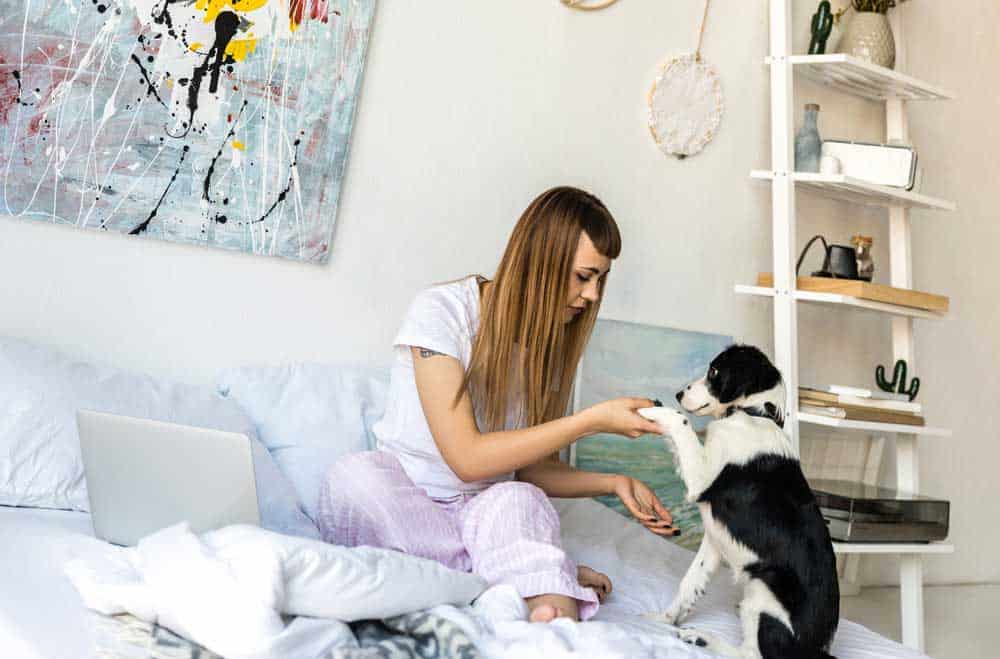



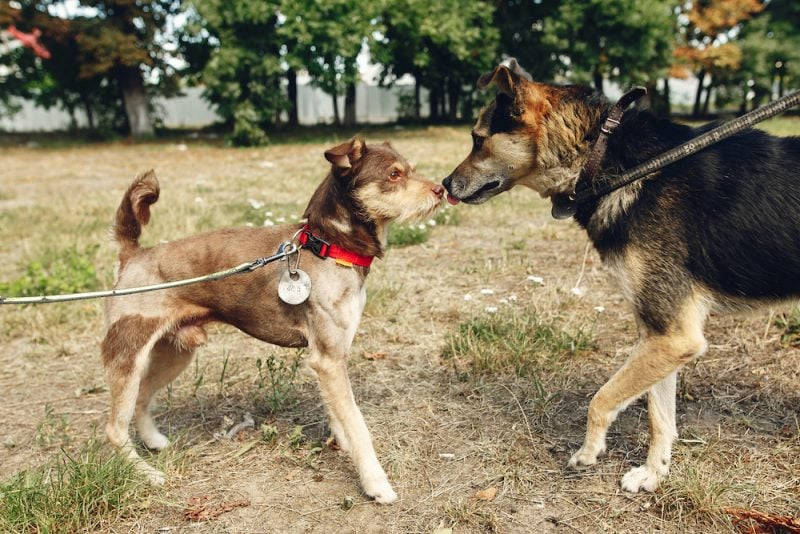
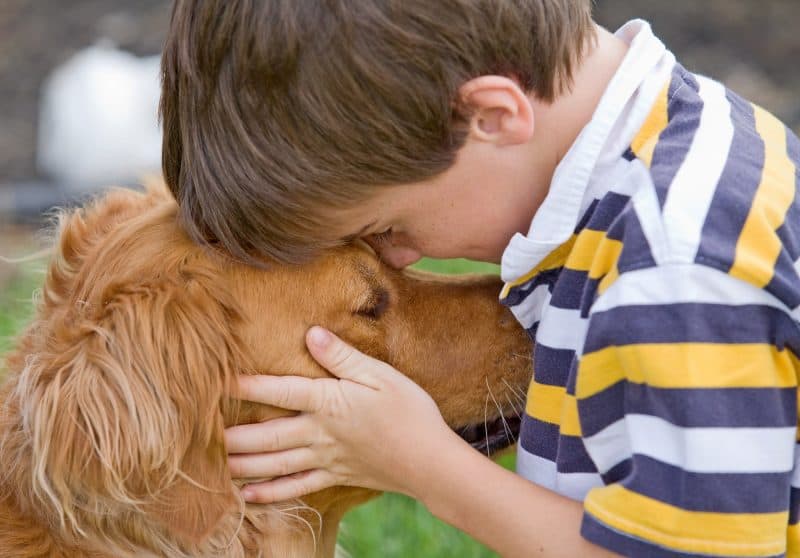
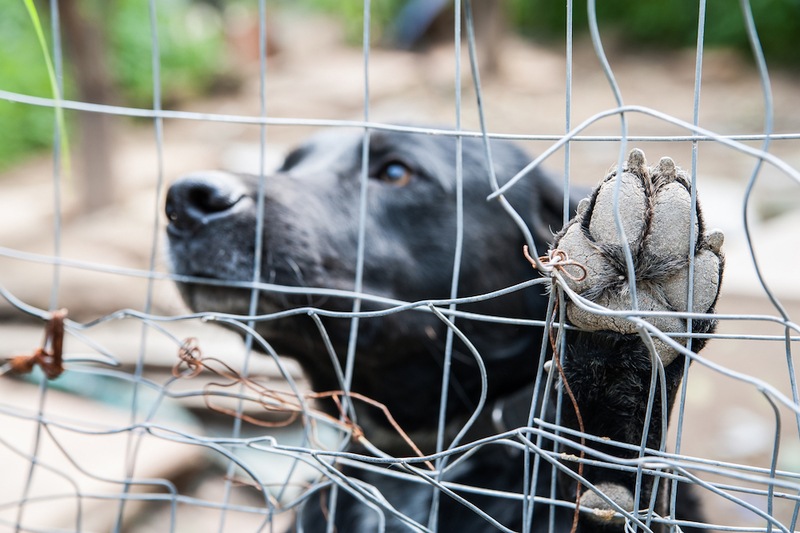

Leave a Comment